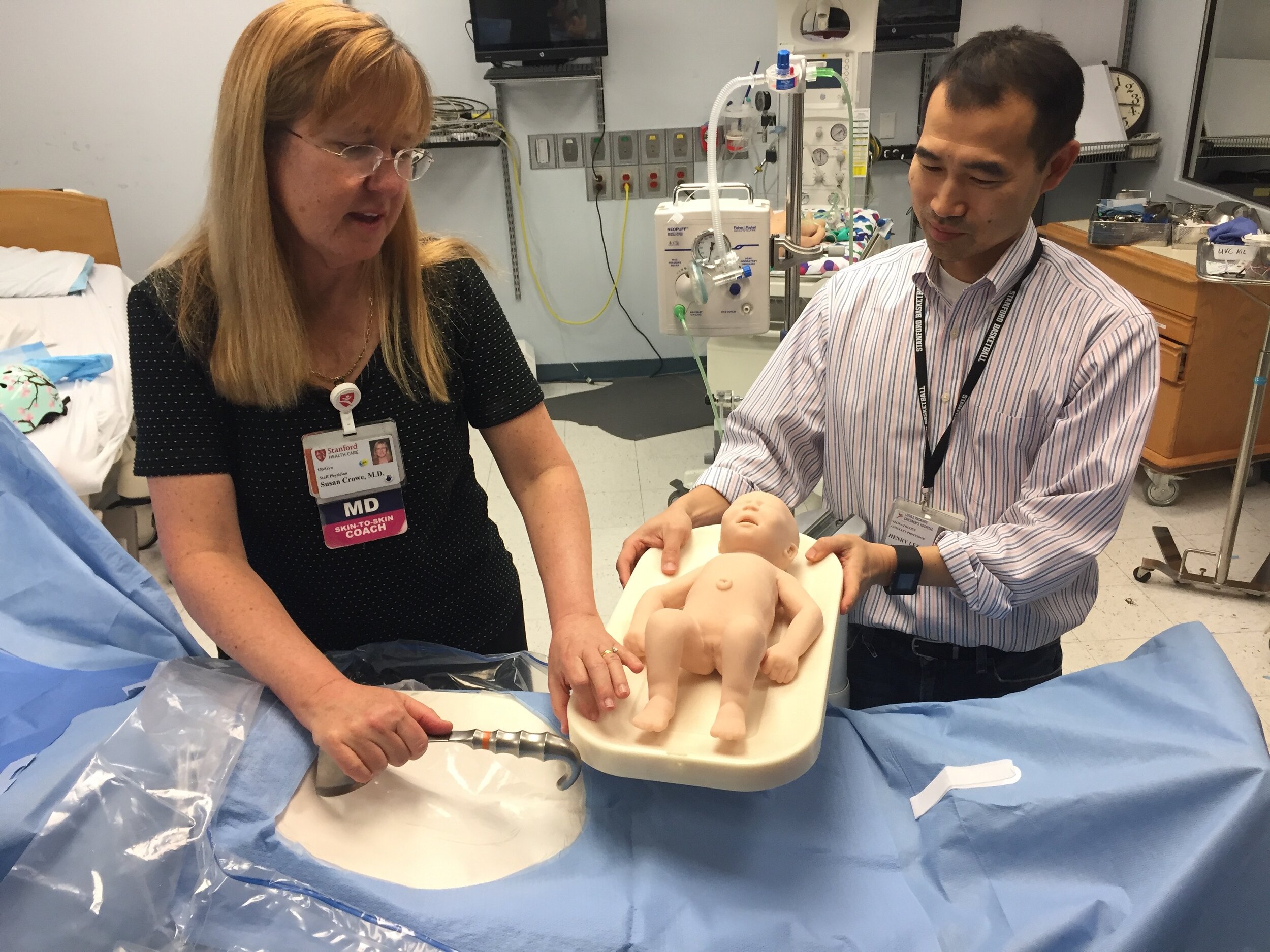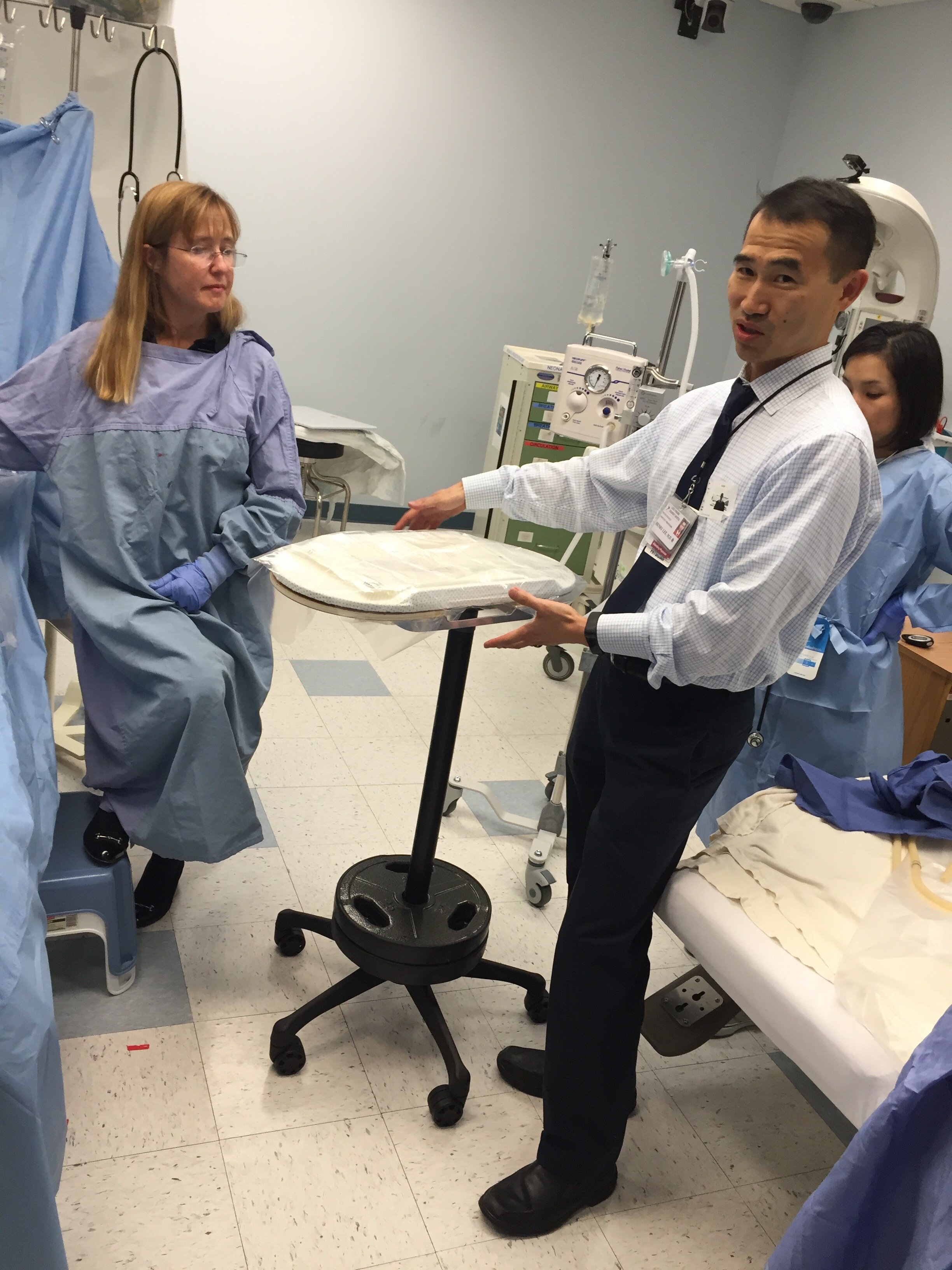
NOOMA: A delayed cord clamping cart
Problem: Clinicians need a way to provide respiratory support to preterm infants immediately after birth while enabling delayed umbilical cord clamping to improve neonatal outcomes.
Solution: NOOMA is a cart to help facilitate delayed cord clamping for any baby.
Stanford Medicine | Stanford, CA | AHRQ-Funded | 2020
“Recommendations for the optimal timing of umbilical cord clamping apply equally to preterm and term births. The guideline development group considered the benefits of delayed cord clamping for preterm infants to be particularly important.” -World Health Organization (WHO)
Delaying the timing of cord clamping to at least 60 seconds after delivery is beneficial and recommended for both preterm and term infants. Current protocols allow for delaying cord clamping for the vigorous infant. However, initiating safe and effective ventilation for neonates while attached to the umbilical cord may increase clinical benefit. Because of the limits of current equipment and space constraints, there is a gap in providing optimal respiratory support to the neonate during the transition period of delayed cord clamping. Our product fills that gap safely and effectively. By creating an effective cart/CPAP surface for helping clinicians perform DCC, healthcare outcomes for preterm infants could improve. There are several needs for this procedure: 1.) A flat surface to perform CPAP resuscitation close to the wound site while waiting for the cord blood to drain during a C-section (preterm infant's umbilical cords are usually 12" or less) 2.) Maintaining the sterile field 3.) Keeping the baby warm during the procedure 4.) Safe transfer of the preterm baby to a larger warming table after DCC.
NOOMA was made possible by The Stanford Medical School Department of Pediatrics and The Center For Advanced Pediatric and Perinatal Education (CAPE), which is a simulation lab affiliated with Lucile Packard Children’s Hospital and Stanford University. AHRQ Grant #P30HS023506
PIs: Neonatologists Henry Lee, MD and Louis Halamek, MD
Design Team: Doug Schwandt, MSE, Henry Lee, MD, Chris Rothe, Jules Sherman, MFA
Patent: US 11,344,463 2022



















